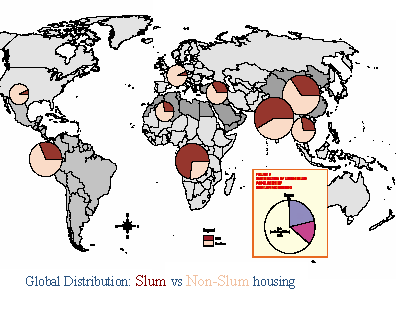· home · projects · bulletin board · links · who are we · contact ·
|
· home · projects · bulletin board · links · who are we · contact · |
|
|
CAN THE GLOBAL HOUSING PROBLEM BE SOLVED?
|
|
|
Can we meet the need? What if we do?
Groundwork is committed to addressing this need. We are committed to providing people with a healthy environment in which to live. One of the problems in doing this is that the very act of so much development can have negative consequences that in itself makes an unhealthy environment. Therefore, part of solving this problem requires a consciousness of the environmental impact of what we are doing. As a planet we are facing global environmental problems such as acid rain, global warming and the pollution of our atmosphere and water. These problems have been created in large part by the industrialized countries representing perhaps 1/3 of the world’s population. The rest of the world looks to the industrialized countries and the U.S. in particular as the model of where they want to go. However, if the rest of the world follows in our footsteps, we are in big trouble. On the other hand, it is not reasonable to say to these people, “Don’t develop. Don’t do as we have done.” Therefore, one of the challenges Groundwork Institute has taken on is to demonstrate how people can develop, how they can obtain a high quality living environment, and do this in a way that is healthy for the environment, that does not have the negative effects that the U.S. model from the past has had. It is not enough to provide good housing for everyone. We must do it in a way that is healthy for the planet and all the beings on it, which not coincidentally includes the inhabitants of the wealthy countries as well as the poor. It is in the interests of the inhabitants of the wealthy countries to see that the inhabitants of the poor countries are well housed and in a way that is healthy for the environment.
|
|
 |
This map shows the
distribution of slums around the world.
The brown part of the pie is the slums.
As you can see that slice is rather small in the US and western
Europe. In Asia it is almost half
the housing and in Africa it is almost 3/4. What does this brown area
look like in real life?
|
|
· home · projects · bulletin board · links · who are we · contact · |
|